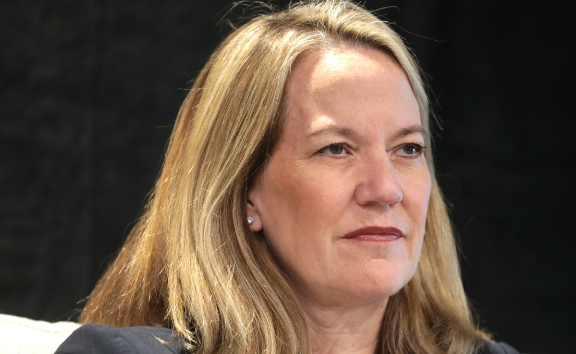
by Jonathan Eberle | Aug 20, 2025 | News
By Jonathan Eberle |
Lawmakers on the Arizona Senate Health and Human Services Committee held a tense hearing Monday as state officials faced questions over one of the largest Medicaid fraud scandals in state history, a scheme that exploited the American Indian Health Program and cost taxpayers an estimated $2.8 billion.
Committee Chair Sen. Carine Werner (R-LD4) opened the hearing by describing the fraud as “staggering” and said it exposed major lapses in licensing, monitoring, and fiscal safeguards. She noted that while corrective actions have been taken, the state’s response has sometimes harmed legitimate providers through delayed payments and abrupt regulatory shifts.
Officials from the Arizona Health Care Cost Containment System (AHCCCS), the state’s Medicaid agency, outlined how fraudulent providers recruited vulnerable Native Americans into unlicensed sober living homes. Investigators reported that some individuals were lured with alcohol or drugs, their Medicaid identification numbers used to bill the state for services never provided. In many cases, patients were moved repeatedly between facilities, deprived of food and basic necessities, and in some instances locked inside rooms. The schemes often involved “ghost billing,” duplicate charges, and shell companies.
Marcus Johnson, a deputy director at AHCCCS, told senators the abuse centered on the American Indian Health Program, a fee-for-service system that was exploited between 2020 and 2023. Spending through the program jumped from $84 million to $372 million in just three years, with average monthly costs per patient tripling. Johnson said the agency has since suspended payments to 327 providers and instituted stricter verification of tribal status to prevent non-eligible individuals from being enrolled.
Inspector General Vanessa Templeman detailed the human toll of the fraud. Her teams encountered patients living out of trash bags, denied medical choice, and stripped of personal belongings by facility operators. “Most disturbingly,” she said, “we have seen patients denied informed consent and locked in unsafe conditions.” Templeman emphasized her office has referred multiple cases to law enforcement and continues to work seven days a week investigating suspected abuse.
In response, AHCCCS described reforms that include pre-payment claim reviews, new documentation requirements, temporary provider enrollment moratoriums, and technology upgrades designed to detect suspicious billing patterns more quickly. Officials said the agency has fielded more than 36,000 calls through a dedicated victim hotline and provided emergency lodging to thousands displaced by fraudulent operators.
Despite these efforts, lawmakers pressed for answers on accountability. Chair Werner repeatedly asked who signed off on payments, including $650 million allegedly funneled to an individual in Pakistan. Johnson declined to provide specifics, citing ongoing litigation. Senators voiced frustration, with Werner warning that unanswered questions were unacceptable to taxpayers, providers, and patients still suffering the consequences.
Some members also raised concerns about the impact of heightened scrutiny on legitimate behavioral health providers. Senator Shope noted that reimbursement rates have not been updated in a decade, even as costs have risen, and questioned whether the appeals process for suspended providers is fair. AHCCCS officials maintained that due process is in place, pointing to 104 suspensions that were later rescinded after providers demonstrated compliance.
As the hearing closed, Werner pledged continued oversight, stressing that Arizona must both restore public trust and ensure that fraud prevention measures do not destabilize access to care. “We owe it to the people of Arizona,” she said, “to break the cycle of harm and build a behavioral health system that is transparent and resilient.”
Jonathan Eberle is a reporter for AZ Free News. You can send him news tips using this link.

by Ethan Faverino | Aug 20, 2025 | Education, News
By Ethan Faverino |
In a unanimous decision, the Federal Trade Commission (FTC) has dismissed its lawsuit against Grand Canyon University (GCU) and its CEO, Brian Mueller, bringing an end to years of coordinated lawfare by former Biden administration officials targeting the university.
The lawsuit, previously dismissed by the United States District Court of Arizona on jurisdictional grounds, was fully resolved through a joint Stipulation of Dismissal with Prejudice.
FTC Chairman Andrew Ferguson, joined by Commissioners Melissa Holyoak and Mark Meador, issued a statement citing recent developments that influenced the decision.
The statement reads:
“This case, which we inherited from the previous administration, was filed nearly two years ago and has suffered losses in two motions to dismiss. These losses are compounded by recent events: Grand Canyon secured a victory over the Department of Education in a related matter before the Ninth Circuit; the Department of Education rescinded a massive fine levied on related grounds; and the Internal Revenue Service confirmed that Grand Canyon University is properly claiming 501(c)(3) non-profit corporation designation. In its reduced form, this case presents consumers very little upside relative to the cost of pursuing it to completion, especially given the developments chronicled above. We view it as imprudent to continue expending Commission resources on a lost cause. Because we have a duty to maximize consumers’ return on their tax-dollars investment, we have decided against pursuing this matter any further.”
GCU President Brian Mueller expressed gratitude for the FTC’s objective review, noting that multiple agencies and courts have consistently ruled in GCU’s favor.
“They threw everything they had at us for four years, and yet, despite every unjust accusation leveled against us, we have not only survived but have continued to thrive as a university,” President Mueller said. “That is a testament, first and foremost, to the strength and dedication of our faculty, staff, students, and their families. Above all, it speaks to our unwavering belief that the truth would ultimately prevail.”
The FTC lawsuit was part of a broader, coordinated campaign by former Biden administration officials, including the Department of Education (ED) and the Department of Veterans Affairs (VA), to target GCU with duplicative investigations and lawsuits.
Ethan Faverino is a reporter for AZ Free News. You can send him news tips using this link.

by Jonathan Eberle | Aug 20, 2025 | News
By Jonathan Eberle |
On National Nonprofit Day, August 17, the Arizona Department of Revenue (ADOR) urged nonprofit organizations across the state to check whether they had unclaimed property waiting to be recovered.
ADOR officials noted that many nonprofits may not have realized they were entitled to unclaimed assets such as forgotten bank accounts, uncashed checks, or insurance proceeds. Recovering those funds, the department emphasized, could provide a valuable boost to organizations that serve Arizona communities.
“Every dollar returned to a nonprofit is a dollar that can support the essential work they perform,” the agency stated.
The search process is free, simple, and takes only a few minutes. Nonprofits are encouraged to visit ADOR’s unclaimed property website at azdor.gov/unclaimed-property to see if funds are available. Organizations can search by their nonprofit name and any states in which they operated. Claim forms and filing instructions were also available online. Nonprofits were also encouraged to use the nationwide database missingmoney.com for a broader search.
ADOR says the effort aims to help nonprofits reconnect with resources that belong to them, strengthening their ability to continue providing services across Arizona.
Jonathan Eberle is a reporter for AZ Free News. You can send him news tips using this link.

by Jonathan Eberle | Aug 19, 2025 | Economy, News
By Jonathan Eberle |
Arizona businesses are taking on some of the nation’s largest loans, according to a new study that analyzed Small Business Administration (SBA) lending data from 2021 through 2024.
The report, compiled by Fleysher Law Bankruptcy & Debt Attorneys, found that companies in Arizona borrowed an average of $699,343 per loan, placing the state sixth highest nationwide. In total, 5,293 SBA loans worth more than $3.7 billion were approved in Arizona during the study period.
Georgia topped the list, with businesses borrowing an average of $795,216 per loan across 8,099 approvals, amounting to $6.4 billion. Texas and California followed, averaging $770,887 and $765,968 per loan respectively. California led all states in both total approvals (31,610) and overall loan value ($24.2 billion).
Other high-borrowing states included Alaska ($725,285), North Carolina ($722,981), Louisiana ($663,950), Nevada ($647,991), Alabama ($637,609), and Utah ($630,412). Maine ranked lowest, with businesses averaging just $272,290 per loan.
The study highlights wide regional differences in borrowing patterns, particularly with Southern states recording higher average loans. Analysts note that while large loans may suggest increased financial obligations, they are often a sign of investment rather than distress.
“This data shows clear differences in how businesses across the country access financing,” a spokesperson from Fleysher Law said. “Though large loans mean that the company needs money, it doesn’t automatically signal financial trouble. Many businesses borrow for working capital, equipment purchases, or product development.”
The report reviewed three types of SBA loans:
- 7(a) Loans, which provide flexible funding for a variety of business needs.
- 504 Loans, designed for fixed assets such as real estate, buildings, or large equipment.
- Microloans, offering up to $50,000 for smaller businesses or startups.
The findings underscore how companies across the U.S. are leveraging federal loan programs to finance operations and growth. With economic pressures continuing, access to capital remains a critical factor in business sustainability.
Jonathan Eberle is a reporter for AZ Free News. You can send him news tips using this link.

by Matthew Holloway | Aug 19, 2025 | News
By Matthew Holloway |
Following a post on X mourning the reported buyouts of Arizona Republic writers and reporters, Arizona Democratic Attorney General Kris Mayes received a harsh rebuke for her participation in a 2000 stock trading scandal. Mayes acknowledged being a party in a 2003 article after resigning from the newspaper.
In her August 13th post, Mayes wrote, “The buyouts at the Arizona Republic are devastating. Losing legendary reporters like @maryjpitzl means less accountability and less transparency for the public. And it’s bad news for democracy. As a former Republic reporter it breaks my heart to see the state of the paper today.“
Brian Anderson, Founder of the Saguaro Group and Arizona Capitol Oversight, quoted the post from Mayes the following day. His post included a newspaper clipping dating to the 2003 Arizona Republic story that revealed Mayes’ participation in purchasing stock from Central Newspapers Inc. (CNI) shortly before the sale of the Arizona Republic to Gannett Co., Inc.. The stock trade netted the then-beat reporter approximately $5,000, according to Mayes.
Anderson wrote, “When @KrisMayes was a ‘journo’ at @azcentral, she was investigated for insider trading and then suddenly resigned.”
According to a 2022 article in the Republic, when the scandal came to light again in Mayes’ campaign for the AG Office, the Democrat defended the purchase of CNI stock. No charges against Mayes or the other nine members of the Republic newsroom were brought at the time.
However, as the Republic noted, a letter to readers in the newspaper in 2000 from then-Executive Editor Pam Johnson announced the scandal, informing readers that 10 of its “newsroom staff” were flagged by the company after purchasing CNI stock through their 401(k) accounts.
Johnson, who passed away at the age of 74 in 2021, openly chided her staffers, including Mayes, for violating the Republic’s ethics policy. She wrote, “Republic journalists should never attempt to gain from information the general public does not have access to.”
She told readers:
“In this case, we investigated all of those involved and concluded that no one had what securities regulators would consider ‘insider information.’ That is to say, they had no concrete evidence that the company was going to be put up for sale. And therefore, there were no legal implications. They acted on gossip. Still, they heard or saw things that the general public couldn’t.”
“Many of our staff members heard or saw those same things and did not act. As one said: ‘I didn’t know if it was illegal, but I knew it wasn’t right.’ We agree,” she added.
According to AZCentral, the punishments handed down in the incident included suspensions without pay for four supervisors and formal letters placed in the personnel files of six reporters, including Mayes. The Attorney General has maintained that her subsequent resignation was planned in advance so that she could attend law school.
Matthew Holloway is a senior reporter for AZ Free News. Follow him on X for his latest stories, or email tips to Matthew@azfreenews.com.





